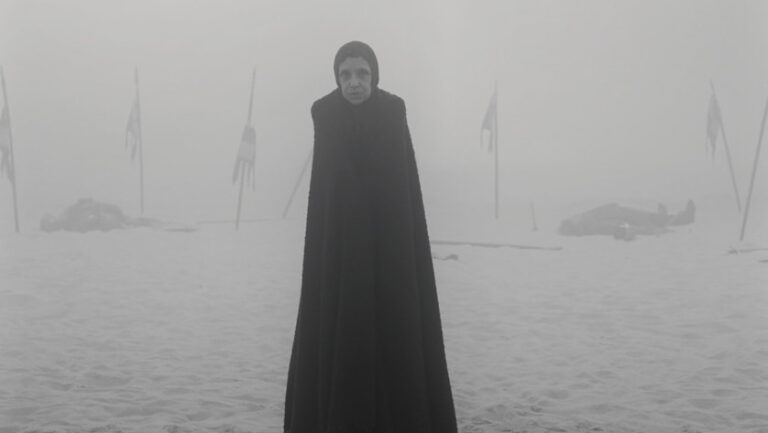Loneliness and Parasocial Relationships in The Woman in the Purple Skirt

Natsuko Imamura’s 2019 novel, The Woman in the Purple Skirt (out in English translation by Lucy North last month), reads at first glance as a fairly straightforward psychological thriller. The narrator obsessively watches the titular woman, taking close stock of her movements and placing herself in situations where she might possibly interact with the Woman in the Purple Skirt. The unsettling meticulousness of the attention the narrator pays to the other woman is contrasted, however, with the seemingly innocent desire she has for human connection. After introducing readers to the woman’s habits, the narrator says, “I think what I’m trying to say is that I’ve been wanting to become friends with the Woman in the Purple Skirt for a very long time.” The narrator’s actions are definitely depicted as creepy, and there is no question that she is behaving as a stalker. But though voyeurism is at the center of the narrator’s fixation on the woman, Imamura also explores a deeper psychological entanglement stemming from a desire to connect when social interaction feels like an insurmountable barrier.
From early in the novel, the narrator defines herself by her relationship with the Woman in the Purple Shirt, calling herself the Woman in the Yellow Cardigan rather than disclosing her name or relying on another, more specific, descriptor for her identity. The Woman in the Purple Skirt gives the Woman in the Yellow Cardigan a sense of identity and purpose, even though the Woman in the Purple skirt has no idea that the Woman in the Yellow Cardigan even exists. Though the narrator is most certainly biased in her obsession with the Woman in the Purple Skirt, there is a sense that there is something genuinely captivating about her. The narrator describes her as a sort of recognized local figure:
The Woman in the Purple Skirt is a celebrity. In the eyes of everyone—children and adults. From time to time, TV camera crews come by this area to conduct interviews with people on the street. But rather than thrusting a microphone in the faces of housewives and interrogating them about their dinner plans or their opinions on the rising price of vegetables, they should occasionally direct questions at elderly people and children. Have you ever heard of the Woman in the Purple Skirt? I’m sure nearly everyone would say: Yes, of course!
The Woman in the Purple Skirt’s appeal is made clear by the way local children interact with her in the park—playing Rock, Paper, Scissors, and daring the loser to go and lightly tap her on the shoulder as she eats a cream bun—as well as how she is treated by her supervisors and coworkers once she lands a job as cleaning staff at a hotel. She is invited out to drinks, offered freebies, and treated warmly after only a few days on the job. The woman fascinates those around her. The narrator thus isn’t the only one who falls under whatever charm the Woman in the Purple Skirt has, though the Woman in the Yellow Cardigan is the only one who seems unable to interact with her directly.
The uneven dynamic between the two women goes beyond the usual dynamic found within novels in this genre. It appears, for example, that the Woman in the Yellow Cardigan holds the most power in the relationship, as she is the one who is constantly watching, the one who knows the most about the Woman in the Purple Skirt. The Woman in the Purple Skirt, however, moves through the story with the Woman in the Yellow Cardigan having little to no impact on the decisions she makes, making clear that it is she who holds the power. The only time the Woman in the Yellow Cardigan makes any sort of real impact on the Woman in the Purple Skirt occurs near the end of the novel, and even then, the Woman in the Purple Skirt manages to thwart the Woman in the Yellow Cardigan’s plans.
The Woman in the Yellow Cardigan’s obsession and off-putting care for the Woman in the Purple Cardigan reads like a parasocial relationship—a term that is used with increasing frequency due to the prevalence of social media and the explosion of internet celebrities. Parasocial relationships are generally described as “relationships” (usually between an individual and a celebrity, public figure, or even an organization) in which one party invests a significant amount of time, emotional energy, and even money while the other side remains wholly unaware of the existence of the other. This type of relationship is built on the feeling that one side is intimately familiar with the other, building a sense that the relationship itself is genuine. Though this may seem unhealthy, the bulk of parasocial relationships, as noted in an article recently published by HuffPost, are actually beneficial: “[s]tudies have shown that these one-sided bonds can help put people at ease, especially in the case of young people figuring out their identities and those with low self-esteem.”
The Woman in the Yellow Cardigan fits this description, but her obsession with the Woman in the Purple Skirt highlights the emotional pitfalls of such an uneven relationship—how empty a life solely made up of uneven, one-sided relationships can be. Though she is intimately familiar with the Woman in the Purple Skirt’s habits and schedule, for example, the Woman in the Yellow Cardigan has little idea of what goes on in the woman’s personal life, such as whether she has family or whether she is involved with anyone romantically. The Woman in the Yellow Cardigan doesn’t even learn the Woman in the Purple Skirt’s name until late in the novel. Unlike parasocial relationships between “regular” people and major celebrities, however, there is an opportunity here for the Woman in the Yellow Cardigan to interact with the Woman in the Purple skirt, to befriend her in a respectful and meaningful way. Yet, social interactions seem to be something the Woman in the Yellow Cardigan struggles with overall.
Throughout the novel, the Woman in the Yellow Cardigan’s presence is often completely overlooked by those around her—part of the reason why she is able to watch the Woman in the Purple Skirt so closely is that she is hardly ever noticed. The unreciprocated emotional and mental energy she pours into the Woman in the Purple Skirt belies a loneliness that has no clear outlet. The Woman in the Yellow Cardigan is unable to connect with others, even those she has consistent contact with, such as her coworkers or even a friendly clerk at a grocery store. The narrator explains, “The [clerk] one day asked out of the blue whether I was okay. It was when things had hit rock bottom for me: I almost collapsed as I took my change from her. The next day, when I went again to the supermarket, she recognized me and called out a friendly greeting. I could never go back to that supermarket.” Rather than taking the opportunity to connect with another human being, who genuinely seemed concerned for her wellbeing, the narrator instinctively recoils, preferring a relationship mediated by distance and anonymity.
Near the beginning of the novel, readers find out that part of the reason why the Woman in the Yellow Cardigan is so taken by the Woman in the Purple Skirt is that she reminds her of other people from her past: her sister, a few childhood friends—people who were kind to her and who she had been able to develop a relationship with. The Woman in the Purple Skirt thus becomes symbolic of the chance to have a meaningful relationship again. There is no question that the Woman in the Yellow Cardigan’s behavior is troubling and erratic, yet there is a genuine care and empathy for the Woman in the Purple Skirt that always remains, regardless of whether we agree with how the Woman in the Yellow Cardigan showcases this care.
In crafting a character who so deeply complicates the typical psychological thriller villain, The Woman in the Purple Skirt offers a sympathetic look at those whose inability to have meaningful social interactions leads to bizarre and ultimately troubling behavior. While the novel maintains enough suspense to create a thrilling storyline, Imamura’s depiction of the Woman in the Yellow Cardigan is surprisingly humane. Rather than falling into simplistic tropes, Imamura offers readers a thrilling story while crafting a complex series of motivations and impulses driving an unreliable, but engrossing narrative voice.


